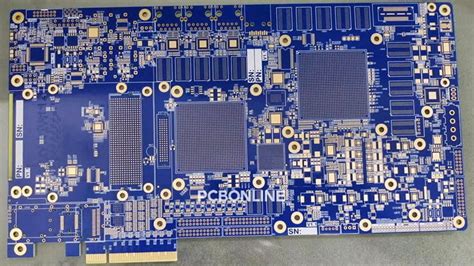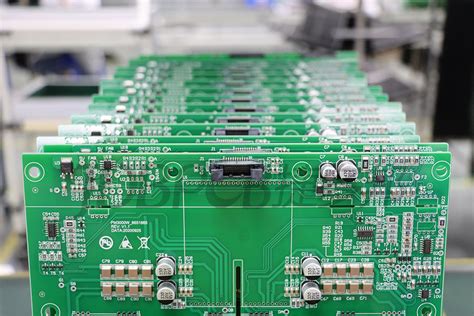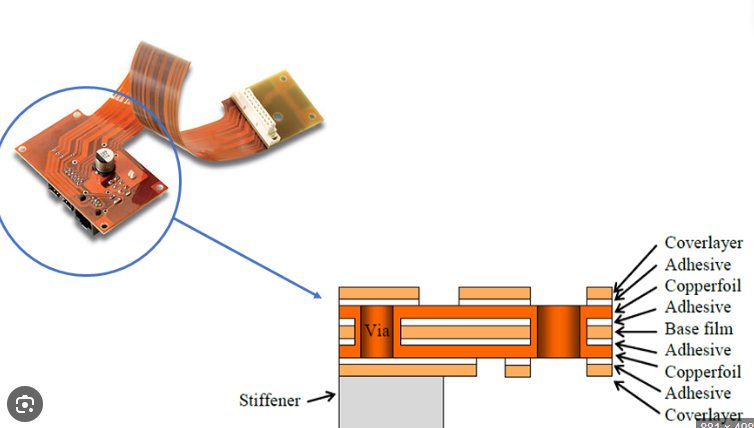How to choose PCB materials for microwave amplifiers/millimeter wave amplifiers
5G represents the latest and greatest in wireless technology, and both design and manufacturing will be challenging, and of course circuit board materials will be challenging, because it will operate at many different frequencies, such as 6 GHz and below, as well as millimeter wave frequencies (typically 30 GHz and above). It will also combine network access from ground base stations and orbiting satellites. However, by carefully considering mechanical and electrical requirements, high-frequency circuit materials can be specified to enable the design and development of 5G power amplifiers regardless of frequency.
Ideally, a single circuit material would be an appropriate starting point for power amplifiers at all frequencies.
However, amplifiers at different frequencies have different design requirements and are best supported by circuit materials with different characteristics that are best suited to different frequencies. For example, insertion loss or dissipation factor may be greater or less depending on the type of circuit material. Every circuit material suffers from a certain amount of loss, and the loss generally increases with increasing frequency. The loss performance of a given circuit material may be acceptable within the microwave frequencies used in 5G networks, but unacceptable in the millimeter wave frequency range because signal power tends to decrease as frequency increases. The low-loss circuit materials required to provide high PA gain and output power at microwave frequencies may not be the best material choice for PAs at mmWave frequencies.
The design requirements for a key circuit material parameter (dielectric constant, Dk) are very different for microwave frequencies, such as 6 GHz and below for 5G systems, and for mmWave frequencies, such as 30 GHz and above, for short-range backhaul links in 5G wireless networks. Selecting the best circuit material for each band requires understanding what Dk values best support the two different frequency ranges. Then finding circuit materials with those Dk values and as many other circuit material attributes as possible to create a good, high-performance, high-frequency PA.
For both microwave and mmWave frequencies, circuit materials for high-frequency PAs must be able to support circuit matching to the impedance of the power transistors in those PAs. This impedance matching is also necessary for active devices in low-power amplifiers, such as driver amplifiers and even low-noise amplifiers (LNAs).
Circuit materials suitable for such impedance matching networks must be able to keep circuit impedance variations to a minimum, which is typically achieved by tightly controlling substrate thickness, i.e., no variations in substrate thickness; tightly controlling the width of conductors (such as microstrip transmission lines) to maintain the same impedance; tightly controlling the copper thickness on the circuit laminate; and tightly controlling the Dk of the circuit material, especially over temperature. While using circuit materials with tightly controlled Dk (e.g., 3.50 ± 0.05) can help maintain high-frequency transmission line impedances within a narrow range, which may be desirable for impedance matching within PA circuits, variations in substrate thickness may have a greater impact on maintaining consistent impedances of high-frequency transmission lines. Circuit materials with Dk tolerances of ± 0.05 or less are considered to have tightly controlled Dk values.
As frequency increases, signal wavelengths continue to decrease, requiring smaller and smaller circuit features.
Many PA circuit structures used at microwave and millimeter-wave frequencies, such as Doherty amplifiers, rely on quarter-wavelength transmission line circuit structures whose dimensions are a function of substrate thickness. Without tightly controlled circuit substrate thickness, it is easy to understand how the impedance of very thin transmission lines and circuit structures can vary with substrate thickness. Typically, substrate thickness variations of ±10% or less are a sign of tightly controlled circuit material thickness.

Feeling the Heat
PA circuits are susceptible to performance variations due to temperature changes, whether caused by the operating environment or by the PA’s own active devices, such as power transistors or ICs, at both microwave and mmWave frequencies. When searching for circuit materials for microwave and mmWave power amplifiers for 5G applications, finding circuit materials that can effectively manage heat is critical to reducing performance variations in the PA, which can cause heat to increase due to its own active devices. Two circuit material parameters are particularly useful when evaluating a material’s thermal performance—thermal conductivity and temperature coefficient of dielectric constant (TCDk).
High thermal conductivity effectively carries heat away from any heat-generating active devices mounted on the PCB, such as the PA’s power transistors.
Continuous heat flow not only removes heat that threatens transistor reliability, but also helps minimize thermally induced PA performance variations. Thermal conductivity of 0.5 W/mK or higher is considered beneficial for PCB materials.
TCDk is a PCB circuit material parameter that indicates how the material’s Dk is affected by temperature changes.
Ideally, the material’s TCDk is 0 ppm/℃, meaning that Dk does not change with temperature. But actual circuit material Dk values can change with temperature, and for circuit materials, we think a TCDk of 50ppm/℃ is good, with little change in Dk with temperature. For amplifiers and other circuits in 5G systems that rely on fine quarter-wavelength circuit structures, circuit materials with low TCDk values will help minimize performance variations.
Compared to low-frequency microwave power amplifiers and circuits, the shorter wavelengths and smaller circuit features required for millimeter-wave power amplifiers and circuits typically require thinner substrate materials and require tight thickness tolerances, which are just as important as for thicker materials. Those thinner circuit materials may also be more sensitive than thicker circuit materials to the effects of other circuit material properties, such as copper surface roughness. Copper surface roughness causes circuit effects such as transmission line loss and phase change, so in 5G microwave and millimeter wave power amplifiers, copper surface roughness should be as small as possible for any circuit material specified for circuits with shorter wavelengths and higher frequencies.
For example, Rogers offers a variety of materials with different thicknesses and other characteristics required for two different frequency ranges
. For 5G power amplifiers at 6 GHz and below, ceramic-based RO4385 circuit laminates with 20-mil and 30-mil thicknesses are a low-cost circuit material that performs consistently over a wide temperature range. The Z-axis Dk is 3.48 at 10 GHz with a tight tolerance of ±0.05. They are well suited for competitive applications and can be manufactured using standard epoxy/glass (FR-4) processes.







